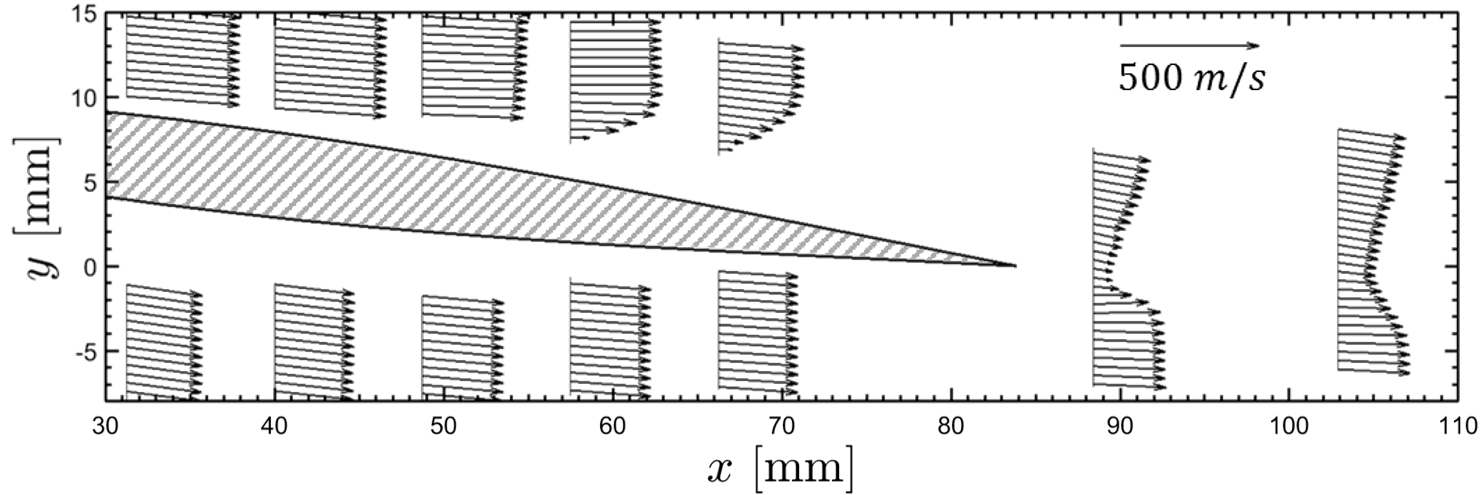|
Femtosecond Laser Electronic Excitation and Tagging (FLEET)
Measurements in NASA’s wind tunnels generally consist of force and moment and on-body measurements like surface pressure, surface deflection or heat transfer to the surface. Detailed off-body measurements are needed to understand complex wind tunnel flows and to provide data to validate high-fidelity computational models. Most existing techniques capable of measuring detailed off-body flows, for example, particle image velocimetry, require particle or gas seeding which is not possible in many of NASA’s tunnels. New femtosecond laser technology shows promise of measuring multiple parameters quantitatively in unseeded wind tunnel flows. The femtosecond laser electronic excitation and tagging (FLEET) technique uses a focused femtosecond laser to dissociate naturally occurring N2 in the wind tunnel. The N-atoms recombine and fluoresce and this fluorescence is captured by a high speed camera, tracking the fluid's movement. FLEET can measure velocity and potentially pressure and temperature simultaneously. These additional parameters will be obtained by observing and interpreting the amplitude, decay and spectrum of the FLEET signal. The main novelty of the proposed work is that FLEET should allow velocity to be measured in several facilities where velocity cannot be currently be measured. The technique requires no seed gas or particles and it is relatively simple to implement. The technique is being developed at Langley in collaboration with the National Institute of Aerospace (NIA), Princeton University (who invented the technique) and Spectral Energies, LLC from Dayton OH, who have been funded through NASA's SBIR program.

Accuracy: FLEET velocity measurements in the freestream agree to ~1% of the velocity determined by the data acquisition system (DAS).

Precision: Single-shot precision with the wind tunnel not operating is about 0.4 m/s. With the wind tunnel operating, typical performance is better than 1% of the measured velocity up to Mach 0.75 (>200 m/s).

Sample application: FLEET velocity profiles measured around a slender airfoil in a transonic cryogenic wind tunnel operating in pure N2 at Mach 0.85. The airfoil is at an AoA of 7.5 degrees.
|




